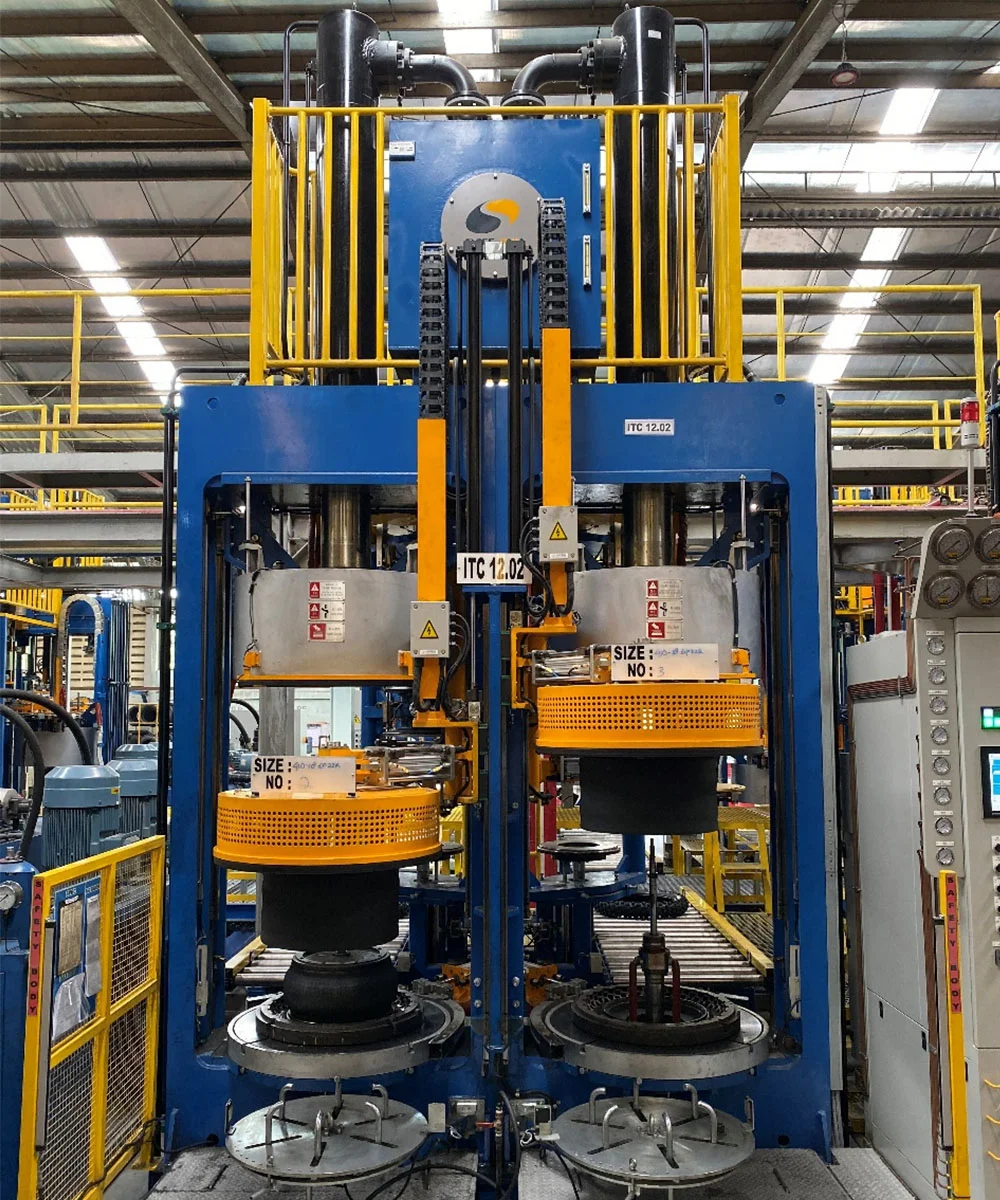- This topic is empty.
-
AuthorPosts
-
2025-09-09 at 5:54 pm #86508
The hydraulic tyre curing press plays a pivotal role in the tire manufacturing process. It is the machine responsible for vulcanizing raw tire components into durable, high-performance products. As the demand for safer, stronger, and more energy-efficient tires grows, manufacturers rely on advanced curing presses to deliver consistency and precision. Among the latest innovations, the SPC100 hydraulic curing press has emerged as a benchmark for performance and efficiency.
Working Principles of Hydraulic Tyre Curing Press Systems
A hydraulic tire curing press functions by applying heat, pressure, and time to mold uncured rubber into its final form. Hydraulic systems ensure consistent mold clamping power, reducing variations in quality. By integrating advanced servo-hydraulic systems and energy-saving thermo group valves, modern curing presses achieve higher efficiency compared to traditional mechanical or steam-based designs.
The SPC100 is designed with a frame-type PCR hydraulic curing press structure, featuring a heating plate diameter of 1220mm and maximum mold clamping power of 2000KN. These parameters make it suitable for producing a wide range of tire sizes, ensuring manufacturers can maintain flexibility in production.
Benefits of Using Hydraulic Tyre Curing Press
When evaluating a hydraulic vulcanizing press for tires, manufacturers consider reliability, energy efficiency, and adaptability. The SPC100 incorporates several design features that address these needs:
-
Accurate manufacturing quality ensures long-term reliability and consistent performance.
-
Post Curing Inflation (PCI) system allows precise tire shaping and effective cooling.
-
Energy savings from servo-hydraulic control and integrated thermo valves.
-
Multi-size compatibility, enabling one machine to vulcanize different tire sizes simultaneously.
-
Dual mold capability, thanks to a single-mode function that allows simple control of two molds at once.
These attributes make hydraulic curing presses not only suitable for large-scale tire plants but also for facilities focusing on small-batch or specialty tire production.
Hydraulic Tyre Curing Press in High-Performance Tire Manufacturing
Modern consumers expect tires that can handle higher speeds, varying weather conditions, and extended mileage. The SPC100 hydraulic tyre curing press is specifically designed to meet the curing requirements of high-performance tires. By offering accurate mold clamping, stable heating distribution, and customizable inflation processes, manufacturers can achieve:
-
Improved uniformity in tire tread and sidewalls.
-
Enhanced bonding of rubber layers.
-
Reduced production rejects due to curing inconsistencies.
This level of precision is critical for premium tire brands that must meet stringent safety and quality standards.

Flexibility of Hydraulic Curing Press for PCR Tires
The frame type PCR hydraulic curing press offers significant flexibility for tire manufacturers. With bead size support ranging from 13” to 20”, the SPC100 can accommodate passenger car radial (PCR) tires across multiple categories. This versatility supports both mass production lines and niche tire development, helping manufacturers adapt to market changes without needing extensive new equipment.
Moreover, the ability to handle small tire batches efficiently is a key advantage in today’s competitive market, where customization and responsiveness are vital.
Energy Efficiency in Modern Hydraulic Tyre Curing Press Designs
Energy consumption is one of the biggest concerns in tire manufacturing plants. Traditional curing presses consume large amounts of steam and electricity. However, the SPC100 hydraulic tyre curing press introduces innovations that minimize energy waste:
-
Servo hydraulic system that adjusts power output according to operational demands.
-
Integrated thermo group valve for optimized heat transfer control.
-
Lower idle energy consumption compared to conventional curing presses.
By integrating these features, manufacturers can reduce operational costs while contributing to sustainability goals.
Automation and Control in Hydraulic Tyre Curing Press Systems
Automation plays a significant role in enhancing the efficiency of tire plants. The hydraulic curing press SPC100 comes with advanced control systems that simplify operations while maintaining safety. Key automation functions include:
-
Single-mode control for dual mold operation.
-
Centralized monitoring systems for temperature and pressure regulation.
-
User-friendly interfaces to reduce operator errors and training requirements.
These automation capabilities streamline production, minimize downtime, and ensure consistent curing results across different tire batches.
Hydraulic Tyre Curing Press and Industry Trends
The global tire industry is undergoing rapid transformation. Growing demand for electric vehicle (EV) tires, eco-friendly designs, and performance upgrades puts pressure on manufacturers to adopt flexible, efficient, and reliable equipment. The SPC100 hydraulic tyre curing press aligns with these trends by providing:
-
Adaptability for emerging tire technologies.
-
Lower environmental impact due to energy savings.
-
Precision control for innovative tire designs.
As tire manufacturers innovate to meet consumer and regulatory demands, hydraulic curing presses remain at the heart of production excellence.
Conclusion
The tire industry’s success depends on advanced machinery that guarantees safety, efficiency, and adaptability. The hydraulic tyre curing press has evolved into an indispensable tool for tire manufacturers worldwide. With models like the SPC100 offering multi-size compatibility, energy-saving systems, and precise curing control, manufacturers can achieve superior product quality while reducing operational costs.
As global mobility trends shift toward sustainability and performance, the hydraulic curing press will continue to shape the future of tire manufacturing. Investing in advanced systems such as the SPC100 is not only a technological upgrade but also a strategic step toward competitiveness in a demanding market.
http://www.soniwellgroup.com
SONIWELL -
-
AuthorPosts
- You must be logged in to reply to this topic.